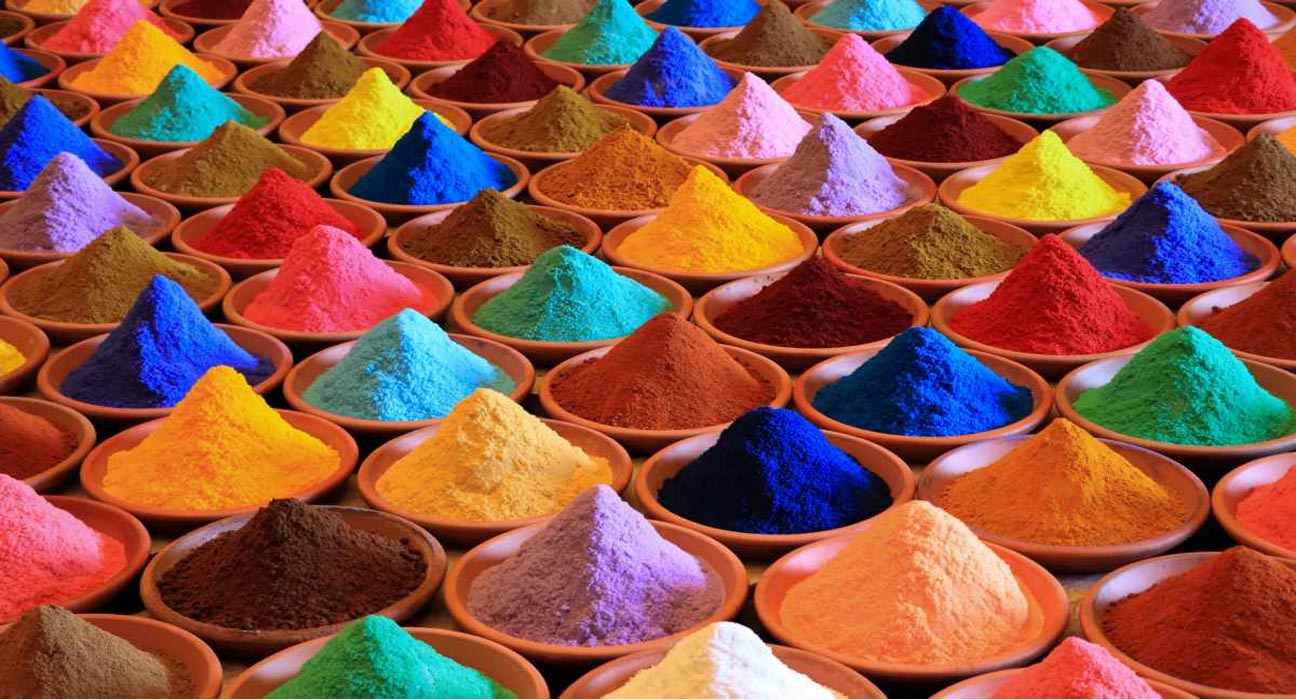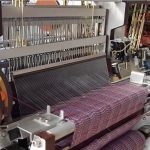Dyeing in Textile| Dyeing is the application of dyes or pigments on textile materials such as; fibers, yarns, and fabrics with the goal of achieving color with the desired colorfastness.
The substance which causes the change in color to a substrate is called dye.”The process of applying color to fiber stock, yarn, or fabric is called dyeing.”
Dyeing in Textile
Dyes Properties
- Intense Color
- Solubility
- Substantivity
- Fastness
There are various types of dye staff present in the market. All the dye staff is classified according to their applications.
Types of Dye
-
Direct Dyes
-
Basic Dyes
-
Acid Dyes
-
Mordant Dyes
-
Sulfur Dyes
-
Azoic Dyes
-
Vat Dyes
-
Reactive Dyes
-
Disperse Dyes
Methods of Dyeing
-
Bale Dyeing
-
Batik Dyeing
-
Beam Dyeing
-
Burl or speck Dyeing
-
Chain Dyeing
-
Cross Dyeing
-
Jig Dyeing
-
Piece Dyeing
-
Random Dyeing
-
Raw Stock Dyeing
-
Solution Dyeing
-
Yarn dye
Process of Dyeing
-
Coloration
-
Absorption
Types of Dye
1. Direct dyes:
These are anionic dyes substantive to cellulosic fibers when applied from an aqueous bath containing electrolyte. Direct dyes are very easy to apply and available in the market.
2.Basic dyes :
Basic dyes are water-soluble cationic dyes that are mainly applied to acrylic fibers but find some use for wool and silk. Usually, acetic acid is added to the dye bath to help the uptake of the dye onto the fiber. Basic dyes are also used in the coloration of paper.
3. Acid dye
An acid dye is a dye that is typically applied to textile at low pH. They are mainly used to dye wool, not cotton fabrics. Some acid dyes are used as food colorants, and some can also be used to stain organelles in the medical field.
4.Mordant dye
A mordant or dye fixative is a substance used to set (i.e. bind) dyes on fabrics by forming a coordination complex with the dye, which then attaches to the fabric (or tissue).
5.Sulfur dye
Sulfur dyes are the most commonly used dyes manufactured for cotton in terms of volume. They are inexpensive, generally have good wash-fastness, and are easy to apply. Sulfur dyes are predominantly black, brown, and dark blue.
The dyes which contain insoluble azo group(-N=N-) are known as azoic dyes. These dyes are not found in ready-made form.
6. Vat dyes
These are a class of dyes that are classified as such because of the method by which they are applied. Vat dyeing is a process that refers to dying that takes place in a bucket or vat.
7. Reactive dye
Reactive dye is a class of dye that makes a covalent bond with the fiber and becomes an integral part of the fiber. These are usually used to dye cellulosic fibers such as cotton, rayon, or flax, but polyamide, wool, silk, and acetate fibers can also be dyed using reactive dyes.
8.Disperse dye:
It is a category of synthetic dye intended for polyester and related hydrophobic fibers. Disperse dyes are polar molecules containing anthraquinone or azo groups.
Methods
1) Bale Dyeing:
This is a low-cost method to dye cotton cloth. The material is sent without scouring or singeing, through a cold water bath where the sized warp has an affinity for the dye. Imitation chambray and comparable fabrics are often dyed this way.
2) Batik Dyeing:
This is one of the oldest forms known to man. It originated in Java. Portions of the fabric are coated with wax so that only un-waxed areas will take on the dye matter. The operation may be repeated several times and several colors may be used for the bizarre effects. Motifs show a mlange, mottled or streaked effect, imitated in machine printing.
3) Beam Dyeing:
In this method, the warp is dyed prior to weaving. It is wound onto a perforated beam and the dye is forced through the perforations thereby saturating the yarn with color.
4) Burl or speck Dyeing:
This is done mostly on woolens or worsteds, colored specks and blemishes are covered by the use of special colored links which come in many colors and shades. It is a hand operation.
5) Chain Dyeing:
This is used when yarns and cloth are low in tensile strength. Several cuts or pieces of cloth are tacked end-to-end and run through in a continuous chain in the dye color. This method affords high production.
6) Cross Dyeing:
This is a very popular method in which varied color effects are obtained in the one dye bath for a cloth that contains fibers with varying affinities for the dye used. For example, a blue dyestuff might give nylon 6 a dark blue shade, nylon 6, 6 a light blue shade, and have no affinity for polyester area unscathed or white.
7) Jig Dyeing:
This is done in a jig, kier, vat, beck, or vessel in an open formation of the goods. The fabric goes from one roller to another through a deep dye bath until the desired shade is achieved.
8) Piece Dyeing:
The dyeing of fabrics in the cut, bolt, or piece form is called piece dyeing. It follows the weaving of the goods and provides a single color for the material, such as blue serge, a green organdy.
9) Random Dyeing:
Coloring only certain designated portions of the yarn. There are three ways of doing this type of coloring:
Skeins may be tightly dyed in two or more places and dyed at one side of the dye with one color and at the other side with another one. Color may be printed onto the skeins which are spread out on the blanket fabric of the printing machine.
Cones or packages of yarn on hollow spindles may be arranged to form channels through which the yarn, by means of air-operated punch, and the dyestuff is drawn through these holes by suction. The yarn in the immediate area of the punch absorbs the dye and the random effects are thereby attained.
10) Raw Stock Dyeing:
Dyeing of fiber stock precedes spinning of the yarn. Dyeing follows the degreasing of wool fibers and drying of the stock.
11) Solution Dyeing:
This is also called dope or spun dyeing; the pigment color is bonded-in in the solution and is picked up as the filaments are being formed in the liquor. Cellulosic and non-cellulosic fibers are dyed to perfection by this method. The colors are bright, clear, clean, and fast.
12) Yarn dyed:
The yarn which has been dyed prior to the weaving of the goods; follows the spinning of the yarn. It may be done in either partial immersion or total immersion of the yarn.
Process
The dyeing of textile fiber is carried out in a solution, generally aqueous, known as the dye liquor or dye bath. For true dyeing to have taken place, the coloration of fabric and absorption are important determinants.
1.Coloration:
The coloration must be relatively permanent: which is not readily removed by rinsing in water or by normal washing procedures. Moreover, the dyeing must not fade rapidly on exposure to light.
2.Absorption:
The process of attachment of the dye molecule to the fiber is one of absorption: that is the dye molecules concentrate on the fiber surface. There are four kinds of forces by which dye molecules are bound to the fiber:
1) Ionic forces 2) Hydrogen bonding 3) Vander Wals’ forces and 4) Covalent chemical linkages
- References: https://www.fibre2fashion.com
- Wikipedia
You May Also See:





